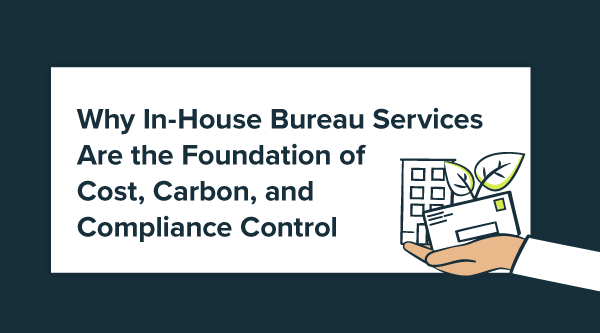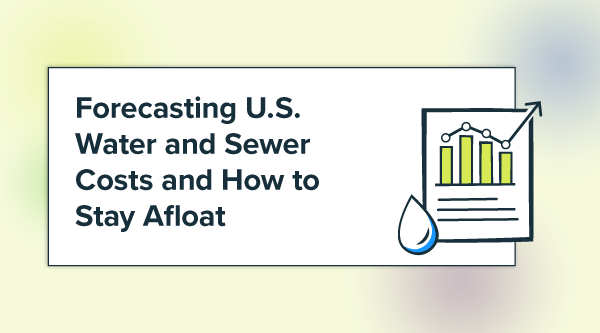Editor’s Note: For this week’s blog, we are happy to share an article written by Dr. Eric Woodroof, Ph.D., founder of Profitable Green Solutions and past president of the Association of Energy Engineers. Dr. Woodroof is passionate about saving energy and reducing pollution, and he currently provides training on practical ways to do energy management in seminars/keynotes all over the world. The article was originally published by Buildings Magazine on January 11, 2018.
I think it is fair to say that almost no one knows what the U.S. President/government will do next, and this uncertainty “trickles down” to business operations, policies, as well as the general business climate. In contrast, building operations are relatively constant year to year. You are going to have energy bills, and reducing those bills is an investment worth capturing.
EE Beats Wall Street
Many of us have seen greater returns on our 401K accounts and other stocks during the past 15 months. However, no one can guarantee that such performance is going to continue. In fact- the stock market could drop suddenly and there is little you could do about it.
We have zero control over Wall Street’s performance. Beyond that fact, a typical energy project (in which you do have some control) is a better investment anyway! The example below compares the Dow Jones Index’s performance for the past 10 years versus a typical energy efficiency project that yielded a conservative 5-year simple payback (or 20% Return on Investment).
Here is the year by year comparison of value if you invested $1 and then re-invested the gains each year (either into additional energy projects or the Wall Street Fund):
| Energy Project Performance | | DJI Performance |
| Year | Annual Return | Account Value | | Annual Return | Account Value |
| 2007 | | 1.00 | | | $1.00 |
| 2008 | 20% | 1.20 | | -33.8% | 0.66 |
| 2009 | 20% | 1.44 | | 18.8% | 0.79 |
| 2010 | 20% | 1.73 | | 11.0% | 0.87 |
| 2011 | 20% | 2.07 | | 5.5% | 0.92 |
| 2012 | 20% | 2.49 | | 7.3% | 0.99 |
| 2013 | 20% | 2.99 | | 26.5% | 1.25 |
| 2014 | 20% | 3.58 | | 7.5% | 1.34 |
| 2015 | 20% | 4.30 | | -2.2% | 1.31 |
| 2016 | 20% | 5.16 | | 13.4% | 1.49 |
| 2017 | 20% | $6.19 | | 25.1% | $1.86 |
At the end of 10 years, the Energy Project would have yielded $6.19 for every dollar invested (net gain of $5.19), while the DJI would have yielded only $1.86 for every dollar (net gain of $.86).
Suppose we consider an alternative comparison and we remove the year 2008, because that was a “bad year” for Wall Street. In this case (below), the Energy Project would still have yielded $5.16 for every dollar invested (net gain of $4.16), while the DJI would have yielded only $2.82 for every dollar (net gain of $1.82).
| Energy Project Performance | | DJI Performance |
| Year | Annual Return | Account Value | | Annual Return | Account Value |
| 2008 | | 1.00 | | | $1.00 |
| 2009 | 20% | 1.20 | | 19% | 1.19 |
| 2010 | 20% | 1.44 | | 11% | 1.32 |
| 2011 | 20% | 1.73 | | 6% | 1.39 |
| 2012 | 20% | 2.07 | | 7% | 1.49 |
| 2013 | 20% | 2.49 | | 27% | 1.89 |
| 2014 | 20% | 2.99 | | 8% | 2.03 |
| 2015 | 20% | 3.58 | | -2% | 1.99 |
| 2016 | 20% | 4.30 | | 13% | 2.25 |
| 2017 | 20% | 5.16 | | 25% | $2.82 |
If you look objectively at the data…Energy Projects beat Wall Street overall, and they beat Wall Street in 8 out of the last 10 years…and we aren’t even accounting for the fact that most EE projects carry very little risk!
Additional Considerations
To be fair, perhaps your company has projects or business processes that return greater than 20%. In that case, great! You should put your money there… but don’t forget to ask if those non-energy projects will get those returns every single year…because the energy projects will.
In fact, energy projects will likely save additional monies as utility prices fluctuate. In addition, by using less energy, your company is less vulnerable to utility price spikes.
As I have written about in past articles, you could also present the savings as “avoided costs”, such that if you didn’t do the energy project, you would be “throwing away” the net benefit ($5.19) on wasted energy bills.
You could also relate back to research I did about 20 years ago, which shows that a company’s stock price increases significantly (by 21% above market) when that company announces an energy project.
That study was done with a confidence interval of 95%, and your company’s CFO may be very interested in reading that paper. Perhaps most importantly, when presenting your energy project, don’t forget to list the “non-utility” benefits, because these might solve a critical problem for your facility owner/decision-maker. In several previous articles, I have discussed how to calculate values for these “secret” benefits of energy projects.
Conclusion
I want to re-state that when comparing “apples to apples” investment-wise, the low-risk Energy Efficiency Projects perform better than Wall Street Investments. I would love to hear your opinion and see if we can further improve on the argument for energy efficiency projects! So feel free to write me at eric@profitablegreensolutions.com.
Best-in-class portfolio-level energy and utility bill data management and reporting.
Real-time energy and sustainability analytics for high-performance, net-zero buildings.
A holistic view of financial-grade scope 1, 2, and 3 carbon emissions data across your entire business.
Energy and sustainability benchmarking compliance software designed for utilities.






